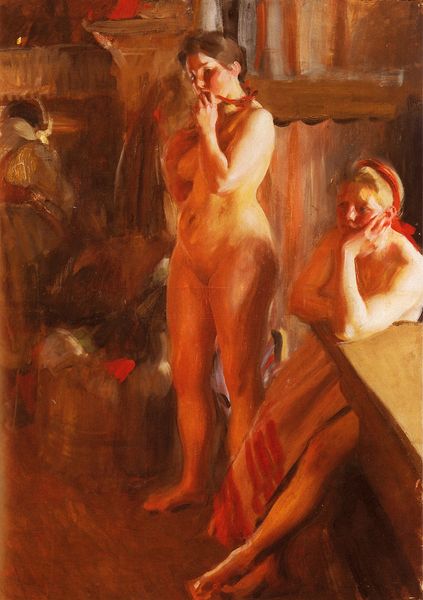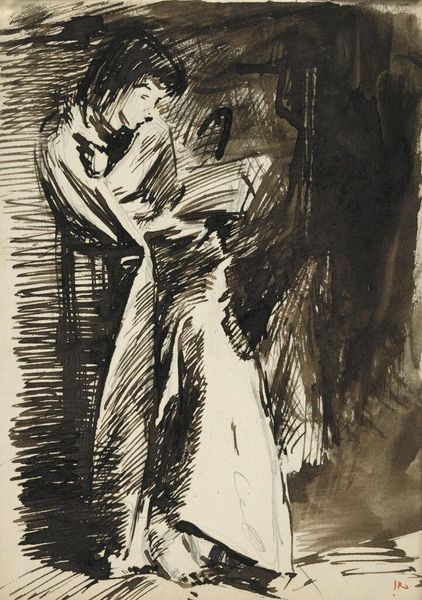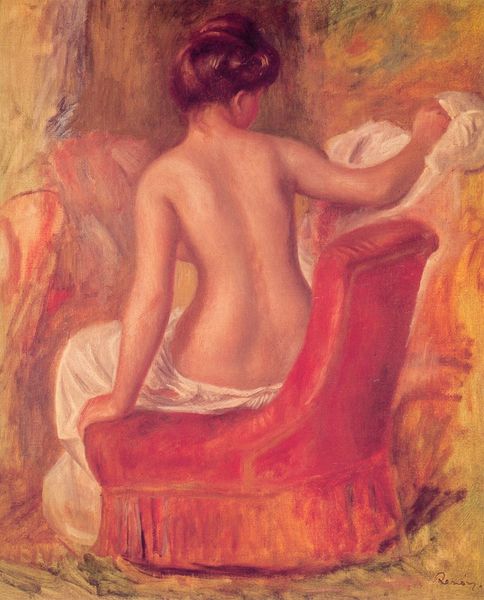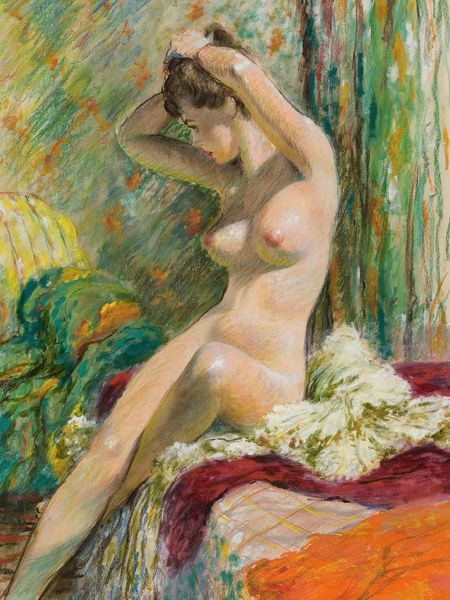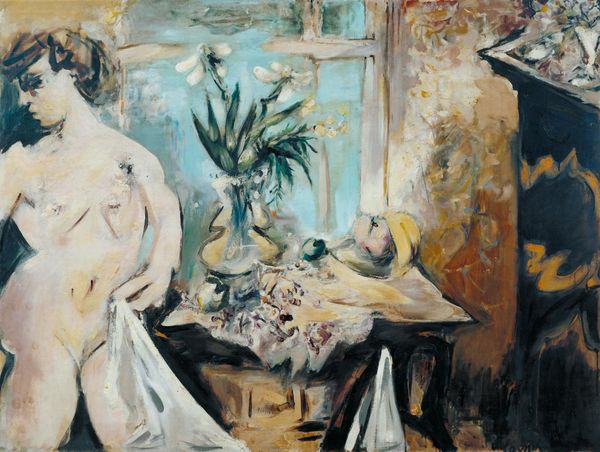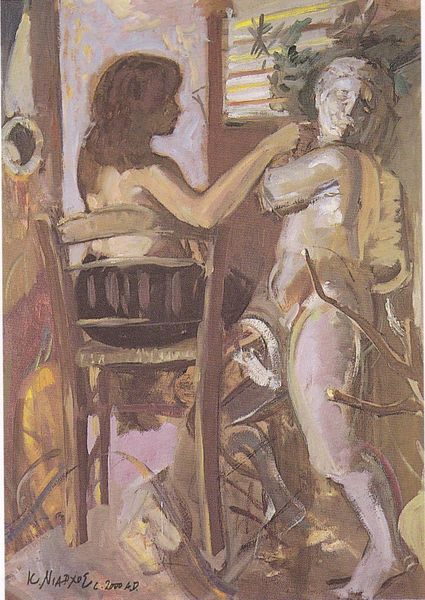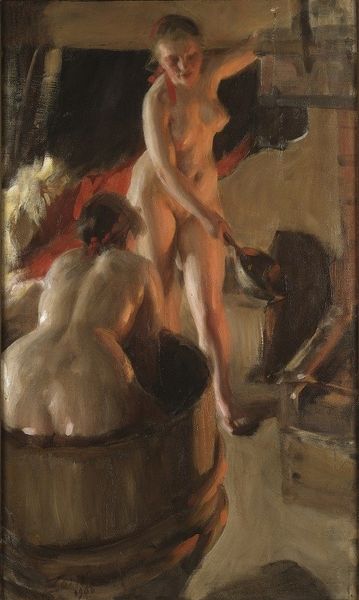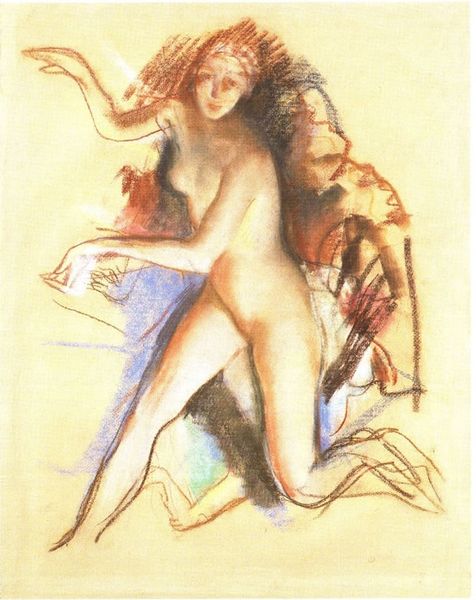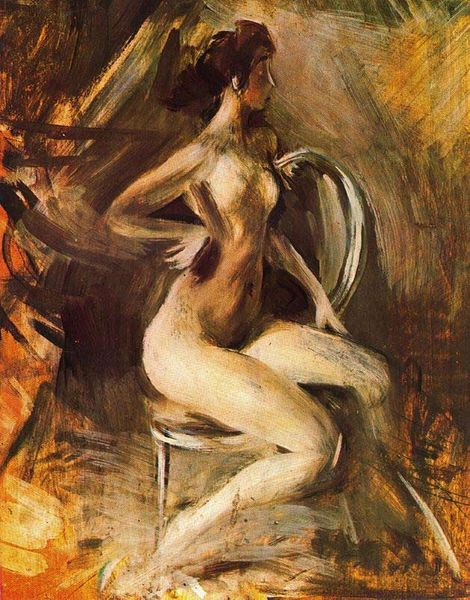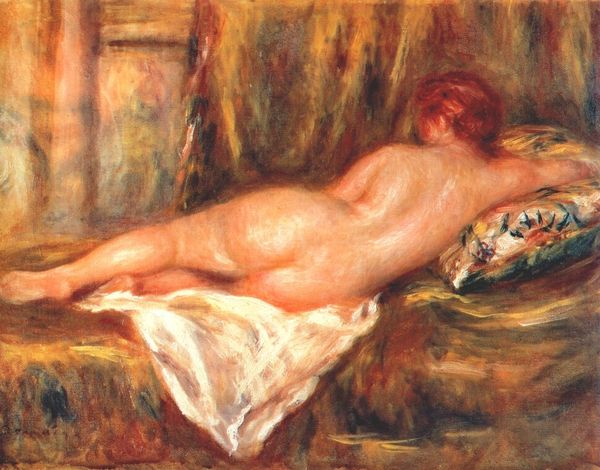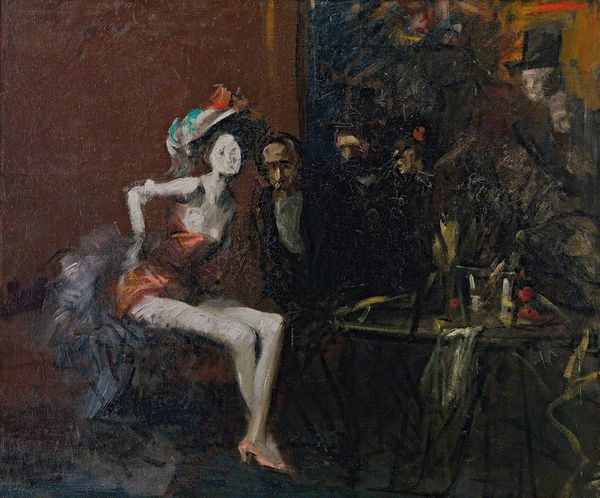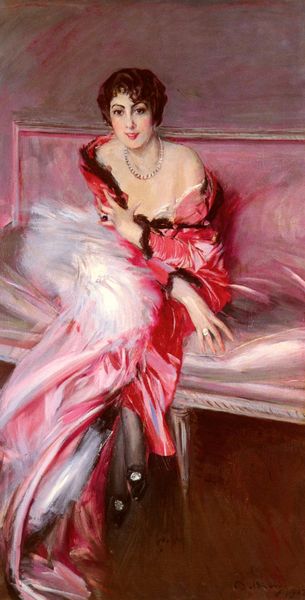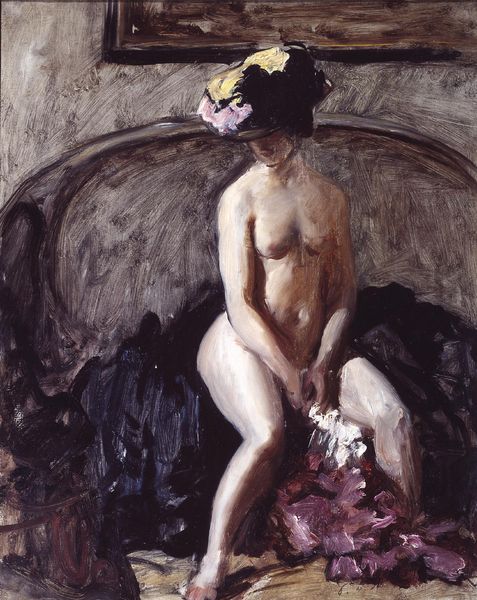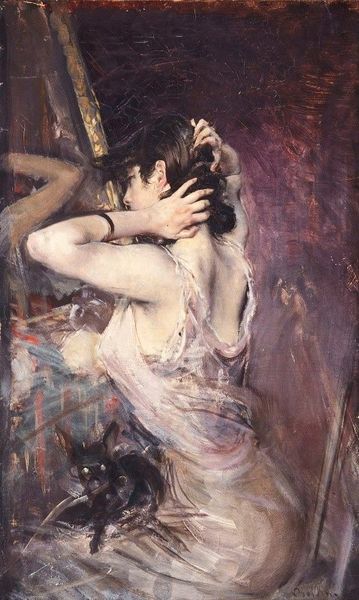
drawing, charcoal
#
drawing
#
charcoal drawing
#
figuration
#
charcoal art
#
oil painting
#
intimism
#
charcoal
#
nude
#
expressionist
Copyright: Public domain
Curator: Rose O'Neill created this charcoal drawing, "Little Mountain Mother," in 1920. Editor: It feels intimate, unsettling even. The contrast between the nude figure and the suited gentleman… the whole thing is a little off-kilter. Curator: Yes, the composition certainly generates a certain tension. Note how O’Neill employs chiaroscuro to model the figures, really highlighting their forms against the background. Consider the male figure's gaze averted from the nude. What statement might that be making about gender and perception in this period? Editor: I immediately wonder about the context in which this piece was created. O'Neill, as a successful female artist and suffrage advocate, undoubtedly had pointed things to say about women’s roles. The setting too: that interior with all those framed portraits…is this a commentary on domestic life or societal expectations? The fact the figure is unclothed is obviously striking. Curator: It’s interesting to consider this within the larger artistic trends of the time. O'Neill's confident use of line and shading does reflect something of Expressionism but in a much more personal, contained manner, what one might even call Intimism. We've discussed compositionally what appears on the right with this darkened and imposing portal like structure, versus to the left how our attention is immediately grabbed by what appears on the fireplace, these items that have a strong history, which makes this painting so amazing to investigate. Editor: The figures feel less like specific individuals and more like stand-ins for broader ideas. I feel as though what appears on the fireplace may contain clues of past societal pressure that contribute to our figures circumstances in this space. This makes us want to understand this interior from our own lens. Curator: True, there’s a certain universality in the way she captures the human form and emotion here through material, color and tone. That the history may lie in other portrait works is striking when observing this composition. Editor: O'Neill, with her progressive views, uses what at first glance looks traditional—the nude, the domestic setting—and subtly undermines it. An artwork becomes this platform for dialogue and reform in its own way. I found this painting to strike a conversation between societal perception of women and a new expectation to embrace the freedom they deserve. Curator: Absolutely, I think analyzing the work from a structuralist perspective and through art historical frameworks reveals how truly intricate it is, with an image offering layers of artistic genius to consider.
Comments
No comments
Be the first to comment and join the conversation on the ultimate creative platform.
